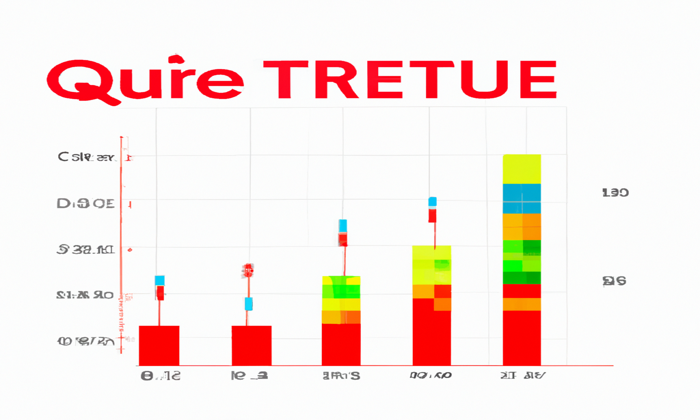Binance, one of the world’s leading crypto exchanges, recently made significant waves in the market with its delisting announcements. On April 11, the platform will remove several spot trading pairs, notably including tokens such as ACT, ALPHA, and PENGU, all of which fall under the scrutiny of Binance’s regular assessments. This decision emphasizes the importance of liquidity and trading volume in maintaining active Binance trading pairs, as the exchange aims to streamline its offerings for users. As traders prepare for these changes, they are advised to review their portfolios and adjust any crypto trading bots connected to these delisted cryptocurrencies. Following these announcements, market reactions have shown intriguing patterns, with several tokens experiencing gradual price increases, highlighting the volatile nature of crypto exchange news during such transitions.
The recent delisting announcements from Binance underscore a crucial shift in how the platform manages its offerings of digital assets. By terminating a selection of spot trading pairings, including those tethered to popular cryptocurrencies, Binance is not only adjusting its trading framework but also signaling traders to consider the broader implications on market liquidity. As traders navigate these high-stakes changes, it becomes essential to stay informed about which altcoins are being affected to avoid potential pitfalls. The decision to remove certain trading pairs operates as a strategic move, aiming to enhance overall trading quality on the exchange. Ultimately, these developments raise important discussions about stability and performance within the ever-evolving crypto market.
Binance Delisting Announcements: Key Information for Traders
On April 11, Binance will execute a significant delisting of multiple spot trading pairs, including tokens such as ACT, ALPHA, BLUR, and PENGU. This decision, announced via a notice on April 9, has sparked discussions among traders regarding the future of these cryptocurrencies. Binance notably focuses on maintaining high liquidity and trading volume; thus the delisting indicates a strategy to streamline its trading environment by removing pairs that fail to meet these essential criteria.
Traders engaged in crypto trading on Binance should be aware of the potential impacts from such delistings. For the affected trading pairs, such as ACT/BRL and ALPHA/BTC, traders are urged to review their positions and consider the effectiveness of their spot trading bots. Given that Binance’s decision stems from rigorous internal assessments of trading performance, it highlights the critical need for traders to continuously monitor the viability of their chosen crypto trading pairs.
Impact of Delisting on Crypto Prices and Trader Behavior
Following the delisting announcement, there have been observable fluctuations in the prices of the affected tokens. For instance, PENGU maintained stability, while Act I the AI Prophecy and RUNE saw increases of 1.1% and 1.3%, respectively. This indicates that market reactions to delisting can vary significantly, often leading to short-term price changes driven by speculation or trading strategies based on fresh information from crypto exchange news.
Despite some tokens gaining traction post-announcement, others, like POND, experienced declines, illustrating the unpredictable nature of cryptocurrency markets. Traders often react to delisting announcements by adjusting their portfolios or strategies, which can lead to volatility. As seen in recent instances, some traders may choose to exit positions to mitigate risks, but others might capitalize on potential rebounds in token prices, showcasing diverse trading psychology within the crypto space.
Reasons Behind Binance’s Delisting Decisions
The recent delistings by Binance have sparked inquiries into the underlying reasons for such actions. According to the exchange, factors like poor liquidity and inadequate trading volume played significant roles in this decision. This strategic approach towards managing Binance trading pairs demonstrates a commitment to optimizing the trading experience for users, ensuring that only viable pairs remain available for trading.
Understanding these reasons is crucial for traders as they navigate their positions in the market. Delisting could be indicative of broader trends in a particular cryptocurrency or sector, and being aware of these factors can help traders make informed decisions about which crypto trading pairs to focus on. Internal reviews conducted by platforms like Binance serve as a reminder of the importance of liquidity, as traders should always be wary of engaging in low-volume trading activities.
Portfolio Management Strategies Amid Binance Delistings
As Binance implements its delisting strategy, traders must re-evaluate their portfolio management to align with recent changes. One effective tactic is diversifying investment across several robust trading pairs, ensuring exposure to strong performers while minimizing risks associated with sudden delistings. This approach can provide traders with safety nets against market fluctuations and allow them to shift focus dynamically as crypto exchange news unfolds.
Furthermore, employing technical analysis to assess the performance of potential spot trading pairs can be beneficial. By regularly analyzing market trends and identifying high-volume cryptocurrencies, traders can avoid similar pitfalls associated with previously delisted tokens. The goal should be to maintain a proactive stance, one that permits quick adjustments based on Binance or other crypto exchange announcements that could affect trading strategies.
The Role of Spot Trading Bots in Cryptocurrency Trading
Spot trading bots have become essential tools for many crypto traders, especially as platforms like Binance provide options to automate trading strategies. However, with the recent delisting of specific trading pairs, traders must ensure that their bots are fine-tuned to avoid trading on pairs that will no longer be supported. The need for regular updates to trading strategies cannot be overstated, given the volatility and fast-paced changes characteristic of the crypto market.
Adjusting trading bots promptly in response to Binance’s delisting announcements can help mitigate possible losses. It’s prudent for traders to set alerts for their spot trading pairs, ensuring that they remain informed about any changes in cryptocurrency status. This vigilance enables traders to capitalize on favorable market conditions while steering clear of obsolete trading pairs that could impact their overall performance.
Understanding Cryptocurrency Liquidity and Trading Volume
Liquidity and trading volume are crucial components in the cryptocurrency market, influencing how trades are executed and the overall health of trading pairs. As Binance examines liquidity levels when announcing delistings, traders should recognize the importance of these elements when choosing their investments. Low liquidity often results in higher volatility and slippage, making it challenging to enter or exit positions at desired prices.
Given that Binance has delisted several tokens due to poor liquidity and volumes, it’s important for traders to prioritize investments in assets with consistent trading activity. This proactive approach not only ensures greater price stability but also fosters more favorable conditions for executing trades. By focusing on higher liquidity pairs, traders can enhance their trading strategies and improve their chances of success amid a constantly evolving market landscape.
The Process of Delisting on Major Crypto Exchanges
Delisting practices on major crypto exchanges, such as Binance, typically involve a structured review process. Exchanges regularly assess the performance and viability of their listing, analyzing factors like liquidity, regulatory compliance, and trading volume. Once a token meets certain negative criteria, exchanges may commence the process of delisting to optimize the trading experience for their users and maintain platform integrity.
This systematic approach can serve as a warning for traders to remain informed about the health of their chosen crypto trading pairs. Traders should continually analyze the market, monitoring any changes in liquidity or trading activity that could signal a potential delisting. Engaging with crypto exchange news and updates can provide insights into upcoming decisions by exchanges that may impact portfolio strategies.
Market Reactions to Delistings: Opportunities and Risks
The immediate aftermath of delisting announcements often reveals a mixed landscape of market reactions. Traders frequently face opportunities to either profit from short-term movements or to incur losses depending on how the market responds to such announcements. Monitoring price changes closely after Binance’s delisting notices can unveil opportunities to capitalize on speculative trading behavior.
On the flip side, the risk of volatility looms large as traders scramble to position themselves after sudden delistings. With prices fluctuating wildly, a careful evaluation of market sentiment and potential rebound strategies is vital. This emphasizes the importance of a disciplined approach to trading, allowing traders to navigate the risks associated with delisting while identifying opportunities for growth in an unpredictable market.
The Importance of Staying Updated on Trading Pair Statuses
In the fast-paced world of cryptocurrency, staying updated on the status of trading pairs is critical for naive and seasoned traders alike. Announcements pertaining to delistings, such as those recently made by Binance, can dramatically affect trading strategies and portfolio performance. Thus, engaging with crypto exchange news regularly should be an essential aspect of every trader’s routine.
Failing to keep abreast of such news may lead to overlooking critical developments that could impact investments. As Binance and other exchanges continue to evolve their trading strategies, the onus falls on traders to monitor and adapt proactively to those changes. This not only helps to maximize returns but also ensures that traders minimize potential losses caused by uninformed decisions in a volatile market.
Frequently Asked Questions
What are the recent Binance delisting announcements for trading pairs?
On April 9, Binance announced plans to delist several spot trading pairs, including ACT/BRL, ALPHA/BTC, BLUR/BTC, CELR/BTC, PENGU/BNB, POND/BTC, and RUNE/BNB, effective from April 11 at 03:00 UTC. This decision was influenced by factors like poor liquidity and trading volume.
How will the delisting of Binance trading pairs affect my trading bots?
With the upcoming delisting of certain Binance trading pairs, traders need to update or cancel their spot trading bots linked to those pairs before April 11 to prevent potential losses. Affected pairs include ACT/BRL and PENGU/BNB, among others.
What tokens were included in the latest Binance delisted cryptocurrency announcement?
The recent Binance delisting announcement includes tokens such as ACT, ALPHA, BLUR, CELR, PENGU, POND, and RUNE across multiple trading pairs. Traders should take note of these changes ahead of the delisting date.
Why did Binance decide to delist certain crypto trading pairs?
Binance’s decision to delist certain trading pairs is based on multiple factors identified during internal reviews, primarily poor liquidity and trading volume. The exchange periodically reassesses its listed trading pairs, leading to these announcements.
How did the market respond to the recent Binance delisting announcements?
Following the Binance delisting announcement, most tokens in the affected trading pairs saw modest price increases shortly after. Notably, RUNE increased by 1.3%, while CELR and BLUR rose slightly, indicating a resilient market response to the news.
What should I do if my cryptocurrency is on the list of delisted Binance trading pairs?
If your cryptocurrency is featured in the delisted Binance trading pairs, it is crucial to update or cancel any trading bots associated with those pairs by April 11. Additionally, monitor your investments closely as new trading opportunities may arise after the delisting.
Will Binance provide reasons for delisting certain trading pairs?
While Binance did not specify the reasons for each individual pair’s delisting, the announcement cited overall factors such as poor liquidity and trading volume as key considerations behind their decision. It’s important for traders to stay informed through Binance’s official channels.
When will the delisted trading pairs become unavailable on Binance?
The delisted trading pairs, including ALPHA/BTC and POND/BTC, will officially become unavailable on Binance starting April 11 at 03:00 UTC. Traders should ensure they are prepared for this change to avoid disruptions.
| Token | Trading Pair | Price Movement Post-Announcement | Reason for Delisting |
|---|---|---|---|
| ACT | ACT/BRL | +1.1% | Poor liquidity and trading volume |
| ALPHA | ALPHA/BTC | N/A | Poor liquidity and trading volume |
| BLUR | BLUR/BTC | +0.1% | Poor liquidity and trading volume |
| PENGU | PENGU/BNB | N/A | Poor liquidity and trading volume |
| POND | POND/BTC | -0.7% | Poor liquidity and trading volume |
| RUNE | RUNE/BNB | +1.3% | Poor liquidity and trading volume |
| CELR | CELR/BTC | +0.2% | Poor liquidity and trading volume |
Summary
Binance delisting announcements highlight the exchange’s decision to phase out certain trading pairs due to a lack of sufficient liquidity and trading volume. On April 11, trading pairs such as ACT/BRL and POND/BTC will be removed, affecting multiple tokens like ACT, ALPHA, and RUNE. Traders need to be vigilant, particularly in managing their trading bots linked to these pairs, due to potential impacts on their investments. Additionally, some tokens experienced minor price increases following the announcement, indicating a varied market reaction. Understanding these developments is crucial for Binance users who wish to navigate their trading strategies effectively.
In a recent wave of Binance delisting announcements, the prominent crypto exchange revealed it will be removing several spot trading pairs starting April 11. This decision affects trading relationships with tokens such as ACT, ALPHA, BLUR, and PENGU, which are primarily paired with Bitcoin (BTC) and Binance Coin (BNB). As per the alert issued on April 9, traders will no longer have access to crypto trading pairs like ACT/BRL and ALPHA/BTC, necessitating immediate attention to those still utilizing these pairs for their trading strategies. Notably, traders leveraging Binance trading pairs should take action to protect their investments, particularly as the platform will also cease its spot trading bot services for these delisted cryptocurrencies. Despite the troubling news, there were slight price recoveries in some of the affected tokens immediately following the announcement, showcasing the volatile nature of the crypto market.
The recent updates from Binance regarding its plans to phase out certain trading pairs have sparked conversations about the evolving landscape of cryptocurrency exchanges. These delisting moves reflect broader trends in asset liquidity and market dynamics, affecting numerous digital assets that were once deemed viable investments. As Binance focuses on streamlining its offerings, active traders must remain vigilant about how delisted cryptocurrencies can impact their portfolios and trading strategies. The engagement with spot trading pairs and specialized trading bots now requires a more strategic approach as the market reacts to these changes. Overall, this development serves as a reminder of the inherent volatility within crypto exchange news, a key consideration for anyone involved in crypto trading.















